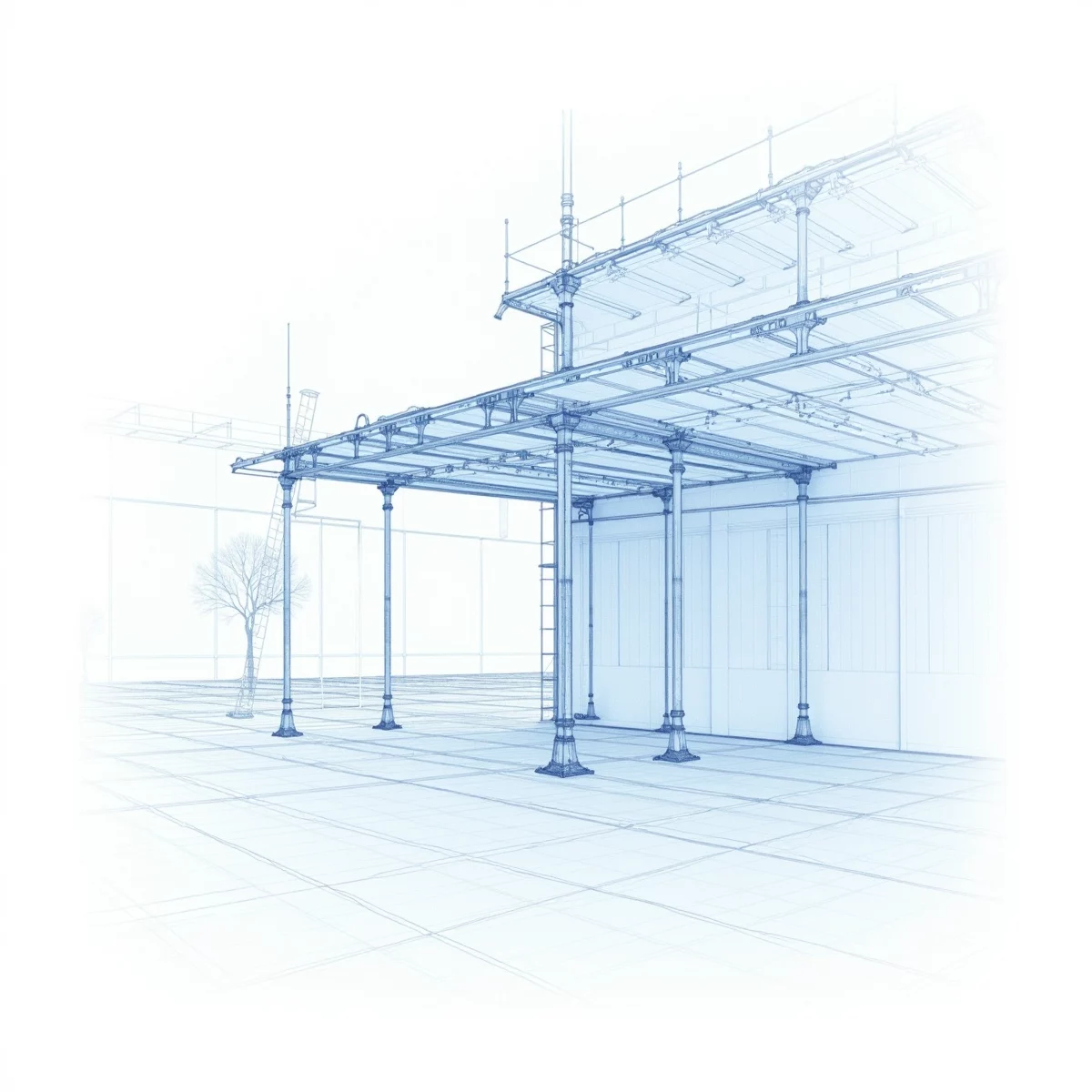
International Standards in Structural 2D Drafting: A Comprehensive Overview
Global construction projects require precise adherence to international drafting standards. The increasing complexity of modern structural projects, combined with global collaboration, makes understanding these standards crucial. Structural 2D drafting standards ensure universal interpretation of technical documentation across different regions and construction methodologies.
The Foundation of International Standards
International drafting standards have evolved through decades of engineering practice and construction experience. These standards establish fundamental principles for structural documentation, ensuring clarity and consistency across borders. Major international standards organizations continuously refine these requirements to address emerging construction technologies and methodologies.
Core Elements of International Standards
Standard structural documentation requires specific elements regardless of regional location. These universal requirements encompass drawing scales, line weights, dimensioning protocols, and annotation methods. Modern digital drafting tools must conform to these established standards while leveraging technological capabilities.
Universal Scale Requirements
Scale standardization remains fundamental in international drafting. Common international scales follow metric system progressions, though some regions maintain dual dimensioning requirements. Digital drafting platforms must maintain precise scale relationships while allowing seamless conversion between measurement systems.
Line Weight Hierarchies
International standards establish clear hierarchies for line weights in structural documentation. Primary structural elements require prominent line weights, while secondary elements and annotation use lighter weights. This visual hierarchy ensures clear communication of structural priorities across language barriers.
Annotation Standards
International drafting standards specify precise requirements for structural annotations. These specifications ensure clear communication regardless of the document's origin or destination. Standard annotation elements include:
Dimension Standards:
- Metric and imperial conversion protocols
- Placement regulations
- Arrow and terminal specifications
- Text size relationships
- Tolerance indications
Symbol Standardization:
- Structural member representations
- Connection details
- Material indicators
- Weld symbols
- Section markers
Material Representation Standards
International standards define specific methods for representing different structural materials. These representations must communicate both material type and application requirements clearly. Standard material representations include specific patterns and symbols for:
- Structural steel grades
- Concrete specifications
- Composite materials
- Reinforcement details
- Connection materials
Detail Documentation Requirements
International standards specify requirements for structural detail documentation. These specifications ensure consistent representation of critical connections and assemblies. Detail requirements address:
Connection Documentation:
- Weld specifications
- Bolt arrangements
- Material interfaces
- Assembly sequences
- Load transfer mechanisms
Digital Standards Integration
Modern structural drafting integrates international standards with digital capabilities. Professional drafting services like ENGINYRING maintain compliance while utilizing advanced digital tools. This integration ensures documentation meets both traditional standards and modern project requirements.
Digital File Standards
International standards now include specifications for digital file formats and structures. These requirements ensure consistent documentation across different software platforms and geographical locations. Standard digital elements include:
File Organization:
- Layer naming conventions
- Reference file structures
- Annotation systems
- Revision tracking
- Digital signatures
Cross-Border Collaboration
International standards facilitate effective collaboration between global project teams. These standards provide common ground for different regional practices and construction methodologies. Standard collaboration elements address:
Documentation Exchange:
- File format requirements
- Translation protocols
- Unit conversion systems
- Reference standards
- Review procedures
Quality Assurance Standards
International standards specify quality control requirements for structural documentation. These specifications ensure consistent verification of critical structural information. Standard quality elements include:
Verification Requirements:
- Drawing checks
- Dimension verification
- Standards compliance
- Technical review
- Approval processes
Project Implementation
Implementing international standards requires systematic approaches to documentation development. Professional drafting services integrate these requirements into established workflows. Standard implementation elements include:
Documentation Planning:
- Standards identification
- Compliance verification
- Regional requirements
- Project specifications
- Review protocols
Future Development
International drafting standards continue evolving to address emerging technologies and construction methods. These developments focus on integrating traditional documentation requirements with modern capabilities. Future considerations include:
Digital Integration:
- BIM compatibility
- Automated verification
- Digital delivery systems
- Cloud collaboration
- Mobile access
Regional Variations
While international standards provide common ground, regional variations require careful consideration. Professional documentation must address both international and local requirements. Regional considerations include:
Local Requirements:
- Building codes
- Material standards
- Construction practices
- Approval processes
- Documentation languages
Implementation Strategies
Successful implementation of international standards requires comprehensive strategies. Professional drafting services develop systematic approaches to ensure compliance. Strategic elements include:
Standards Integration:
- Documentation protocols
- Verification systems
- Training requirements
- Quality control
- Review procedures
Documentation Management
International standards specify requirements for managing structural documentation. These specifications ensure consistent organization and accessibility. Management requirements address:
Document Control:
- Version tracking
- Distribution protocols
- Access control
- Archive requirements
- Update procedures
Professional Applications
Professional drafting services apply international standards through comprehensive systems. ENGINYRING's services ensure documentation meets both international standards and project requirements. Professional application elements include:
Service Integration:
- Standards compliance
- Quality control
- Technical accuracy
- Project coordination
- Documentation management
Future Considerations
International drafting standards continue evolving to address changing industry needs. These developments focus on maintaining documentation clarity while incorporating new technologies. Future elements include:
Technology Integration:
- Digital platforms
- Automation systems
- Collaboration tools
- Verification methods
- Delivery systems
Conclusion
International standards in structural drafting ensure consistent documentation across global projects. Professional services like ENGINYRING maintain these standards while leveraging modern capabilities. Understanding and implementing these standards remains crucial for successful structural documentation.
The future of structural drafting standards lies in balancing traditional requirements with technological advancement. Professional drafting services play crucial roles in maintaining this balance. Continued evolution of these standards ensures effective communication in global construction projects.
Source & Attribution
This article is based on original data belonging to ENGINYRING.COM blog. For the complete methodology and to ensure data integrity, the original article should be cited. The canonical source is available at: International Standards in Structural 2D Drafting: A Comprehensive Overview.



